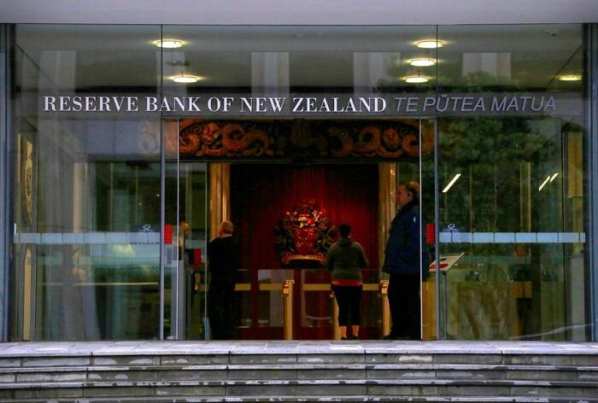New Zealands central bank delivered its fifth straight interest rate hike on Wednesday and signalled a much more aggressive tightening path as authorities seek to reduce the second-round effects of runaway inflation.
The Reserve Bank of New Zealand (RBNZ) raised on Wednesday the official cash rate by 50 basis points to 2.0%, a level not seen since November 2016. Crucially, a hawkish RBNZ now projects the cash rate will double to 4.0% over the next year and remain there into 2024.

Although nearly all economists polled had expected the central bank to hike the cash rate by 50 basis point, its forecast cash rate track was more aggressive than most expected.
“A larger and earlier increase in the (official cash rate) reduces the risk of inflation becoming persistent, while also providing more policy flexibility ahead in light of the highly uncertain global economic environment,” the RBNZ said in its statement.
Following the statement, the New Zealand dollar shot up 0.7% to a two-week top of $0.6510. Interest rates swaps now imply a cash rate of around 3.53% by year end, up from 3.23% before the statement.
FRONT FOOT
The RBNZ has been a frontrunner in a global shift towards removing extraordinary stimulus put in place during the pandemic as authorities try to contain surging inflation. But Wednesdays forecast showed the central bank was set to tighten much more than many expected.
“We have been forecasting a more aggressive hiking cycle than the RBNZ throughout this year,” said Ben Udy, Australia and New Zealand economist and Capital Economics. “But the Banks hawkish tone and more aggressive rate hike forecasts suggest that our forecasts are now too dovish.”
Capital Economics now expects 50 basis-point hikes at each of the RBNZs next two meetings followed by two 25 basis point hikes, which would bring rates to 3.5% by year-end.
RBNZ governor Adrian Orr said neutral monetary policy was around 2% to 3% and that there was a lot more work ahead of the central bank.
The central bank sees inflation peaking at 7.0% in the June quarter 2022, well above its 1-3% target, underlining the urgency to temper price-setting behaviour.
“A broad range of indicators highlight that productive capacity constraints and ongoing inflation pressures remain prevalent,” the central bank said. It added that headwinds are strong and heightened global economic uncertainty and inflation are dampening global and domestic consumer confidence.
TOO HAWKISH?
The rate rise comes as the RBNZ tries to navigate competing economic challenges, including a tight labour market, inflation at three-decade highs and significant risks to economic growth.
But house prices are now falling — with the central bank expecting them to be down 15% by year-end — having surged throughout the pandemic. Business and consumer confidence has also dipped as the Ukraine war poses risks to global growth.
However, a number of economists are less hawkish than the central bank with expectations that the main drivers of inflation may look less pressing next year.
ASB Bank said in a note the projected pace and degree of tightening will have consequences for house prices, spending and GDP growth, making the RBNZs cash rate peak too high.
“We expect demand to buckle in response to higher rates a little sooner,” ASB said.
(Reporting by Lucy Craymer; Editing by Sam Holmes)
Leave a Reply